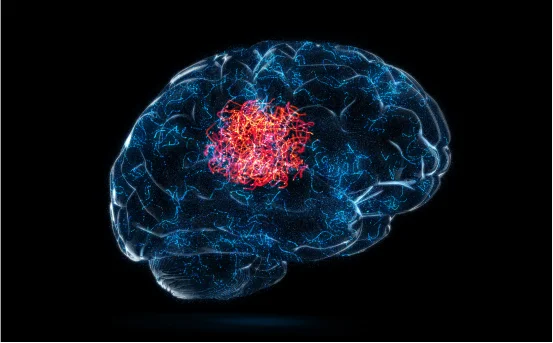Corpus callosum surgery is a rarer neurosurgical procedure done primarily to extreme and uncontrollable levels of epilepsy. The surgery involves sectioning the corpus callosum, which connects the two hemispheres of the brain, and therefore stops seizures from multiplying and spreading to the other hemisphere.
Although epilepsy is not cured by this surgery, in patients who have drop attacks and generalized tonic-clonic seizures, the frequency and intensity of seizures are significantly reduced.
In relation to the surgery, Corpus Callosotomy is the last option to be considered after medications and lifestyle changes have been tried. But what conditions or culprits would lead to this surgical choice? Here, we delve into the main causes for Corpus Callosotomy surgery, including the causes for corpus callosotomy surgery, and attempt to understand the clinical reasoning behind it.
Why Is Corpus Callosotomy Performed?
Understanding of causes for Corpus Callosotomy surgery
Patients suffering from intractable epilepsy are the usual candidates for Corpus Callosotomy. This form of epilepsy is characterized by uncontrolled seizures that cannot be regulated by using anti-seizure medication. Even the decision to carry out this surgery comes after thorough evaluation and workup by both a neurologist and neurosurgeon.
Primary Factors for Considering Corpus Callosotomy Surgery
- Drug-Resistant Epilepsy (DRE)
Primary Cause:
Refractory or intractable epilepsy, known as Drug-Resistant Epilepsy (DRE), is a leading consideration for individuals with Corpus Callosotomy surgery. The condition is termed DRE when two or more appropriate anti-epileptic medications fail to control the seizures.
How it leads to surgery:
Patients who have DRE tend to suffer from life-altering seizures, and corpus callosotomy may improve the situation, especially with generalized seizures.
- Atonic Seizures (Drop Attacks)
Primary Cause:
Atonic seizures result in a sudden loss of muscle tone resulting in unexpected collapse. These types of atonic seizures are frequent and dangerous due to the increase in head and bodily injuries because of falling.
How it leads to surgery:
Corpus callosotomy tends to be useful if these drop attacks are frequent and medication-resistant. The procedure is likely to not allow the seizures to become bilateral, which can provide significant reduction in associated falls and injuries.
- Generalized Seizures with Rapid Bilateral Spread
Primary Cause:
Seizures may begin in one hemisphere of the brain and quickly progress to the other side, resulting in generalized convulsions. If EEG testing demonstrates this rapid bilateral spread and medications are unsuccessful, surgical intervention becomes an option.
How it leads to surgery:
Corpus callosotomy blocks interhemispheric communication, thus preventing the seizure from becoming generalized.
- Lennox-Gastaut Syndrome (LGS)
Primary Cause:
Lennox-Gastaut Syndrome is a rare, severe type of childhood onset epilepsy characterized by the presence of multiple seizure types, cognitive impairment, and abnormal EEG changes.
How it leads to surgery:
Corpus callosotomy is frequently utilized for LGS patients, especially those with refractory frequent drop attacks or generalized seizures.
- Non-localizable Seizure Focus
Primary Cause:
For some patients, the area of the brain where the seizure originates, known as the seizure focus, is not precisely definable. This inability renders focal resection surgery impossible.
How it leads to surgery:
Corpus callosotomy can be done as a palliative surgery to reduce the severity of seizures by truncating their propagation as a last resort surgical intervention.
- Structural Brain Abnormalities
Primary Cause:
Some congenital or acquired brain malformations, including post-traumatic brain injuries and cortical dysplasia, can result in complex and extensive seizures.
How it leads to surgery:
In cases where there are several areas of the brain involved and focal surgery is not possible, corpus callosotomy might be a more effective surgical strategy.
Diagnostic Process Before Surgery
Prior to considering Corpus Callosotomy, neurologists perform a complete and comprehensive diagnostic workup that encompasses:
- Performing an EEG (Electroencephalogram): To assess the patient’s seizures and their patterns.
- MRI Scans: Assessing for any structural changes that could be pathological in nature.
- Neuropsychological Evaluation: Assesses the patient’s intellectual abilities and estimates potential surgical outcomes.
- Video EEG: Provides long-term correlation of some events with brain activity in real time.
The evaluation elucidates many details such as the severity, frequency and type of the patient’s seizures.
Who Are the Ideal Candidates for Corpus Callosotomy?
The ideal candidates generally consist of:
- Children or adults who experience drop attacks or generalized tonic-clonic seizures
- Patients suffering from refractory epilepsy
- Patients with non-localizable seizure foci
- Those diagnosed with Lennox-Gastaut syndrome
- Patients who are not ideal for focal resection surgeries
The overarching objective remains enhancing the quality of life by lowering the risk of seizure-related injuries and improving overall safety.
Conclusion
Corpus Callosotomy is not intended to be the first option for anyone with epilepsy. However, it can be very useful as a tactical approach for certain intractable seizure types. It may not be a curative approach for epilepsy, but it is highly effective in increasing patient safety and minimizing the impact of seizures on daily activities.
The rationale for Corpus Callosotomy surgery needs to be appreciated by caregivers as well as patients and by the medical community. Informed insights and sound rationale strengthen the surgical decision-making process rather than relying on assumptions.
Those who endure uncontrollable seizures and relentless epilepsy are encouraged to consult with neurologists to explore a wider range of treatment strategies which may include corpus callosotomy.






















